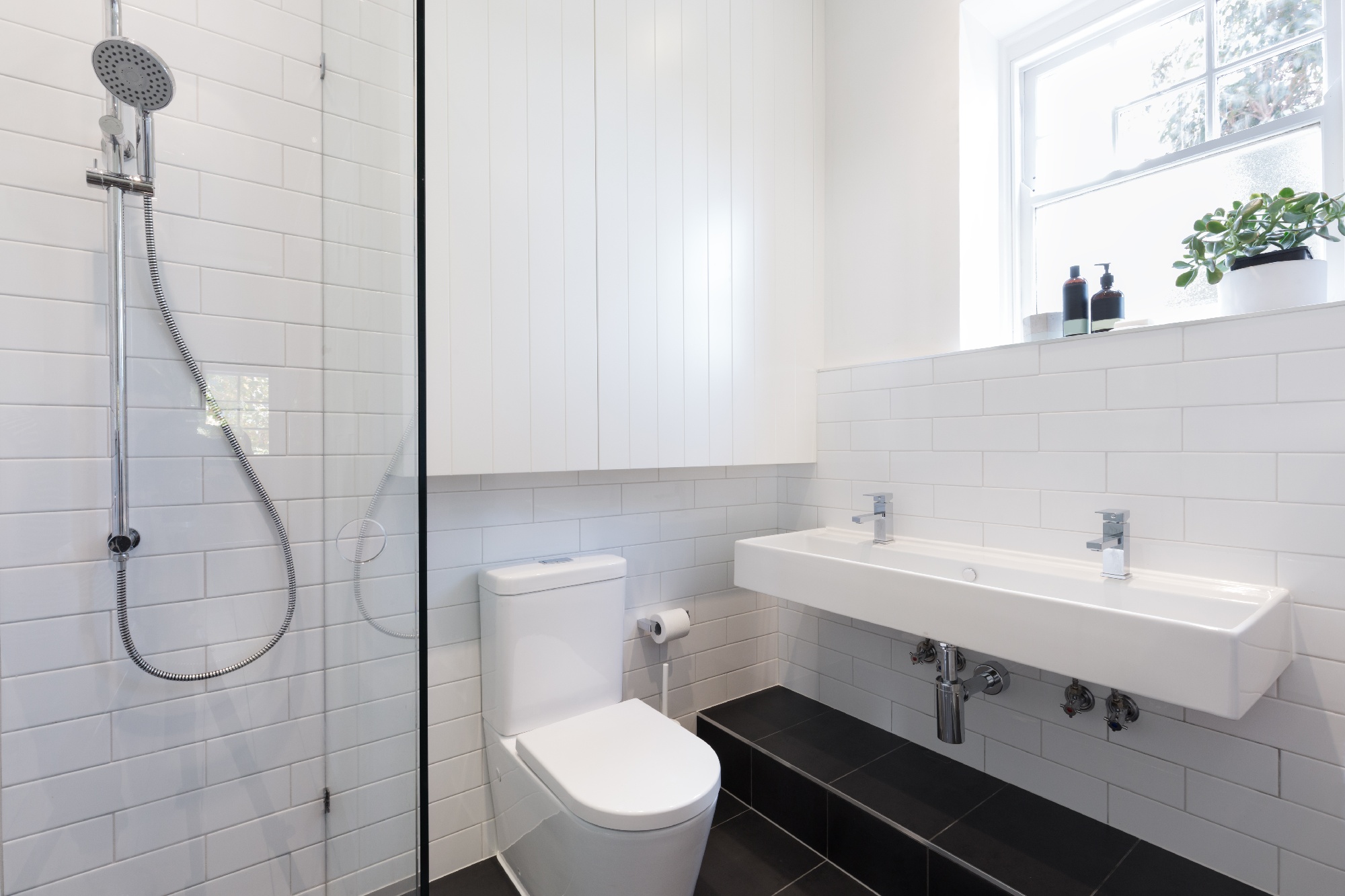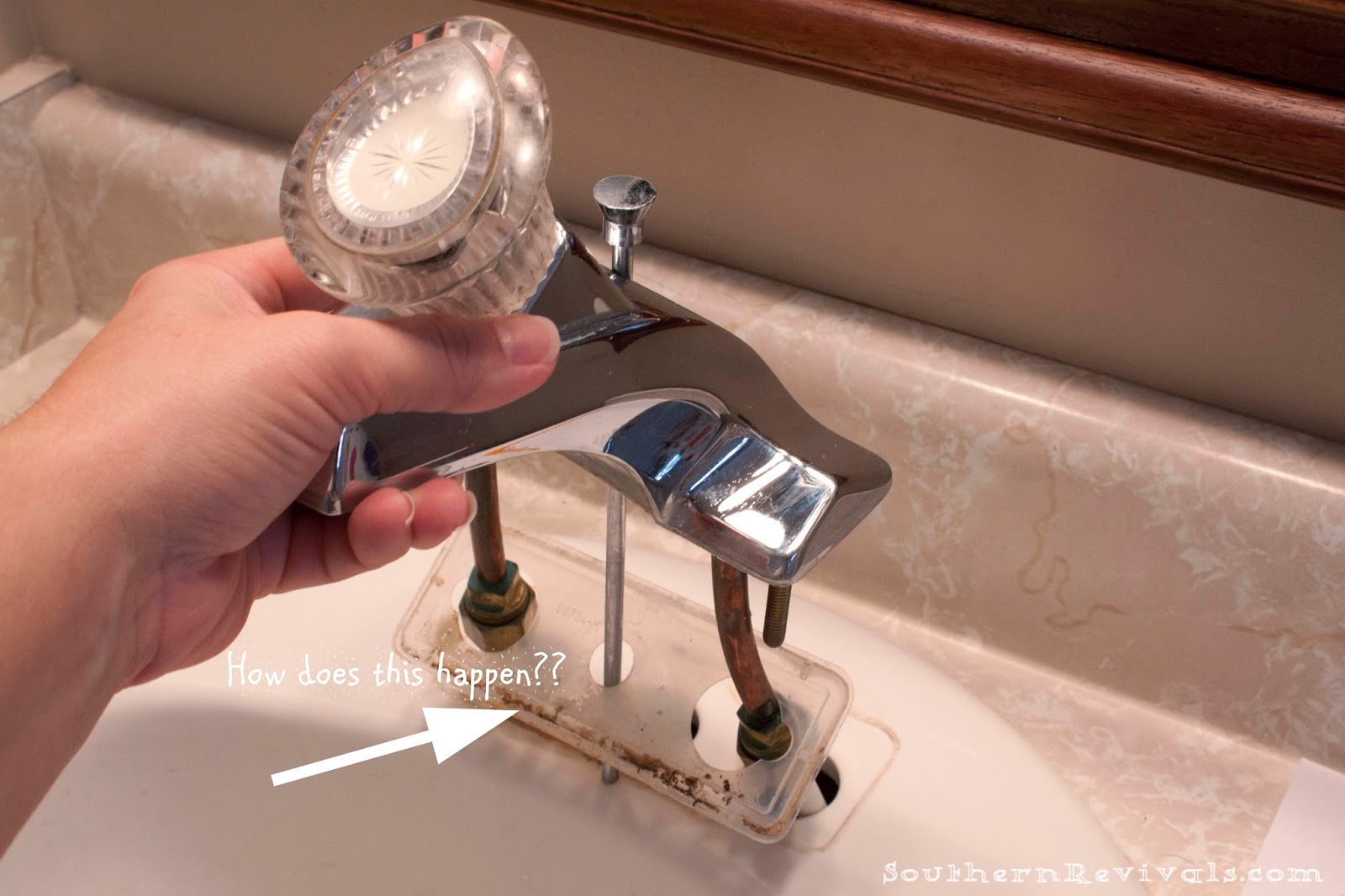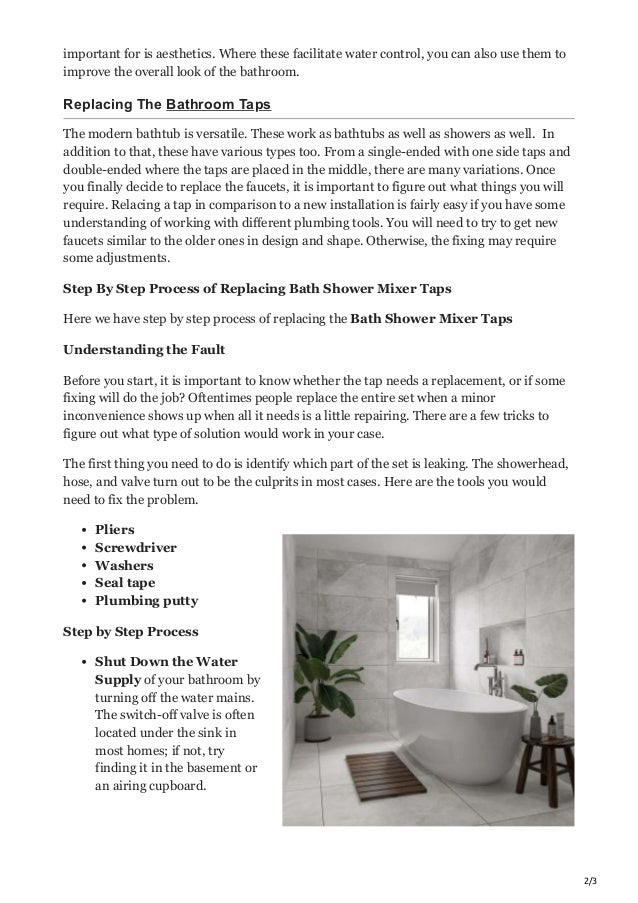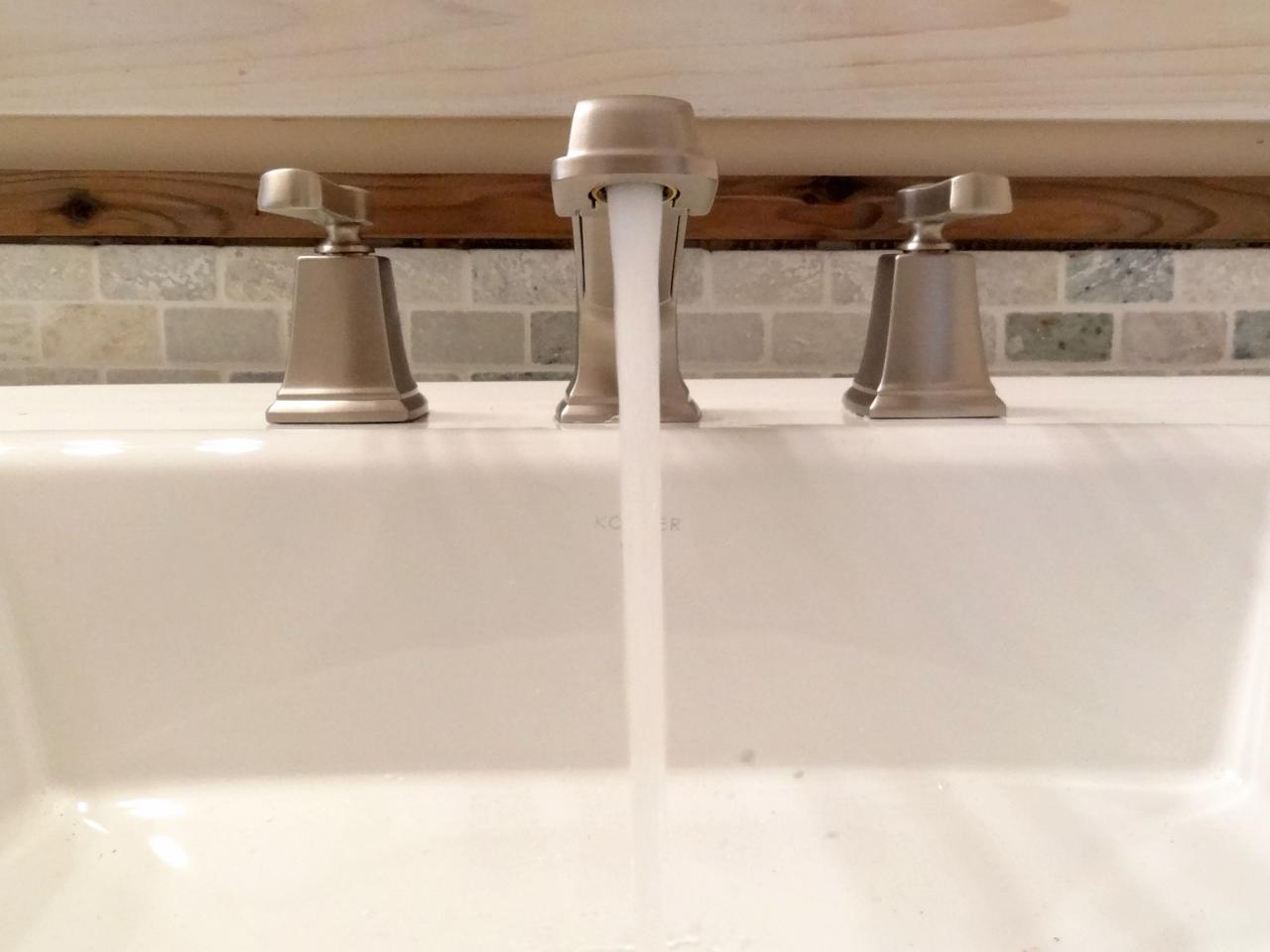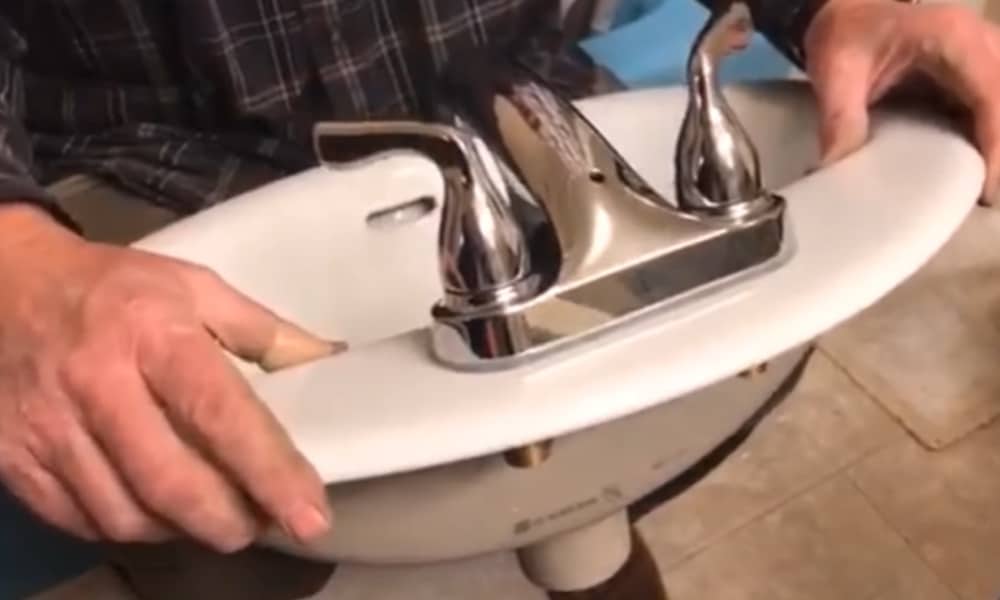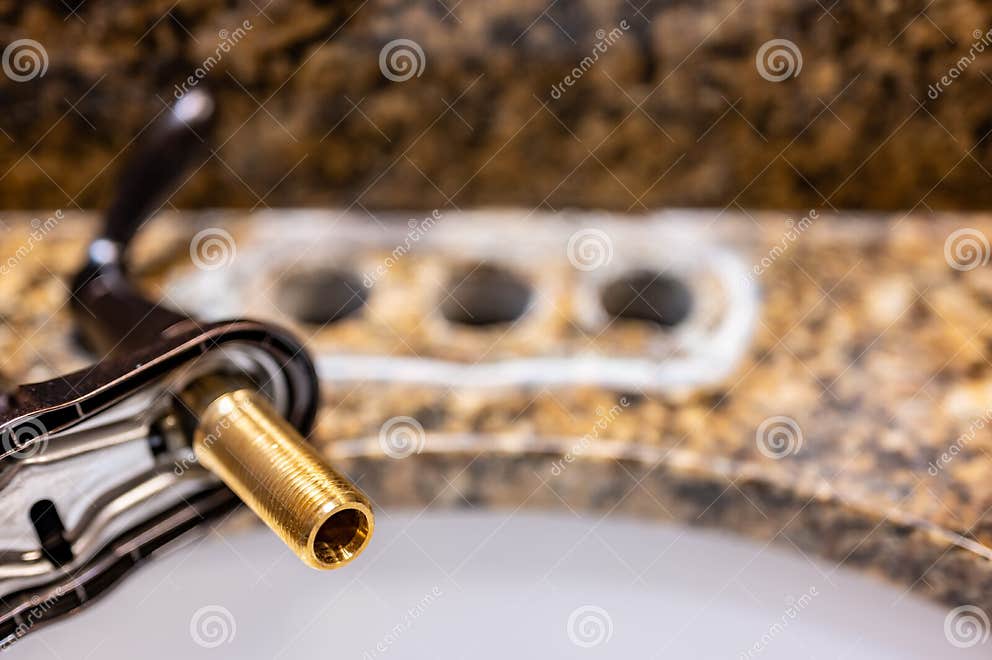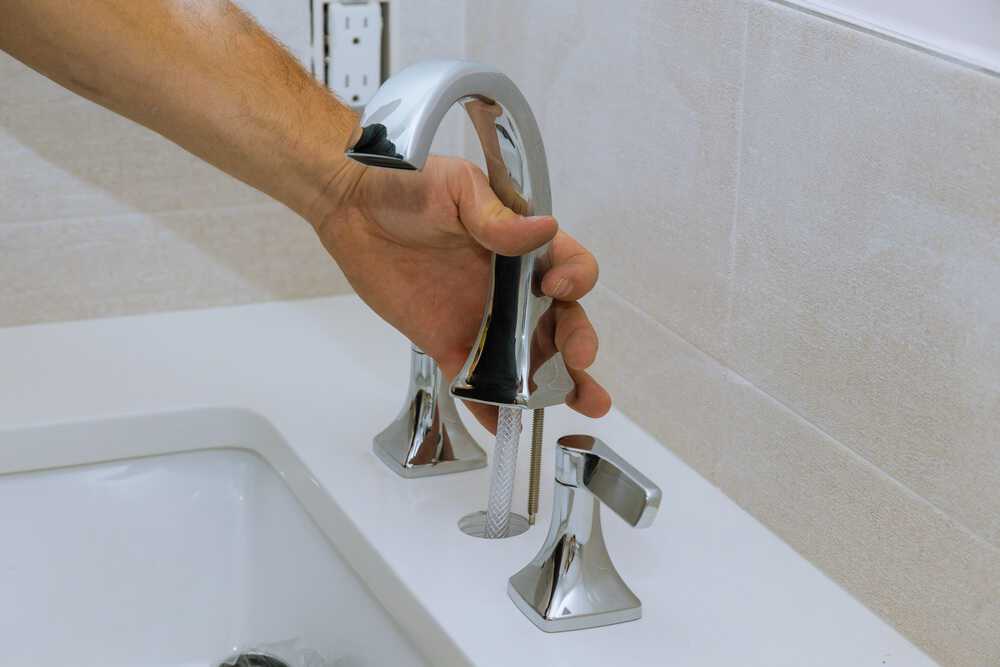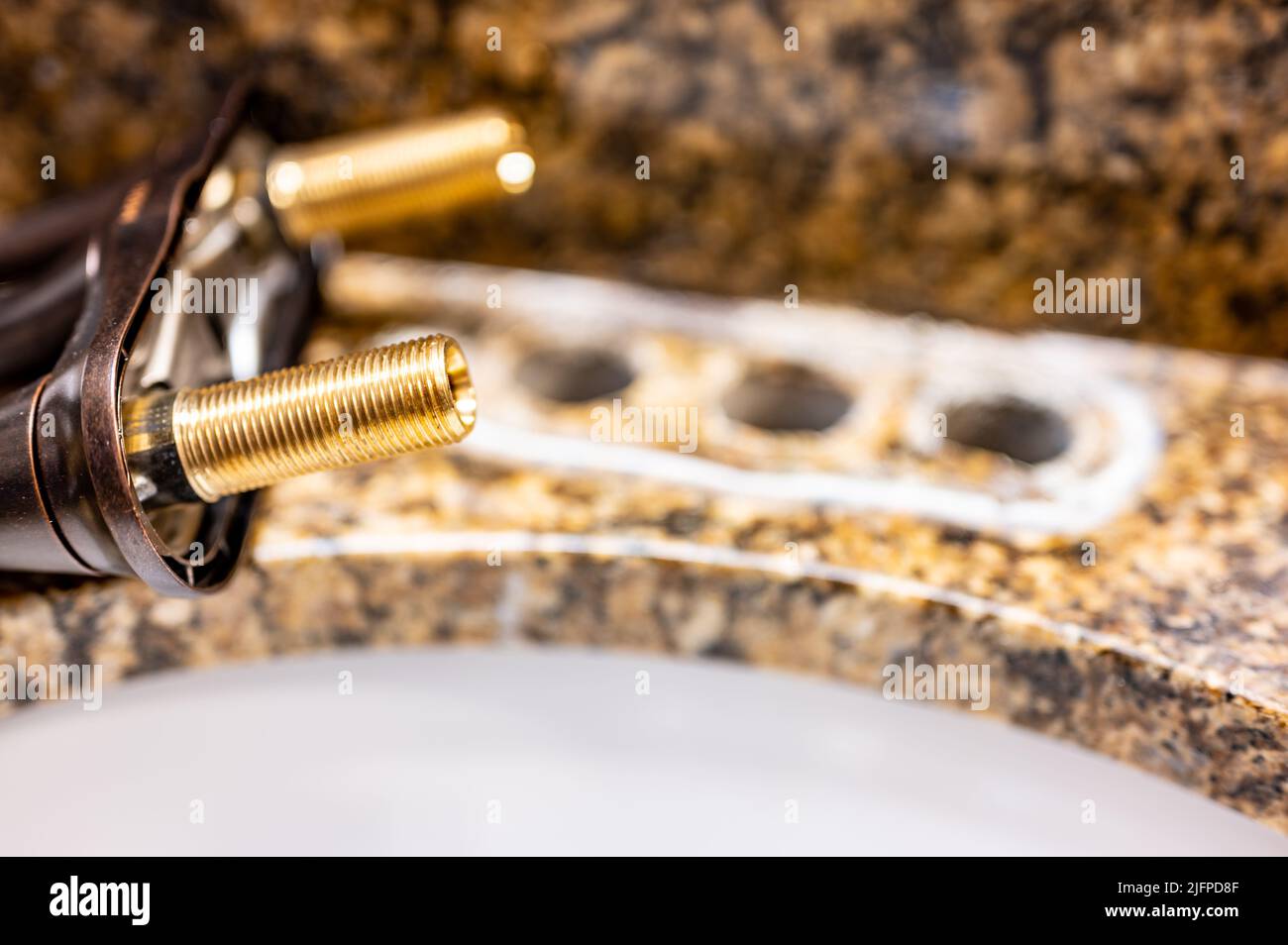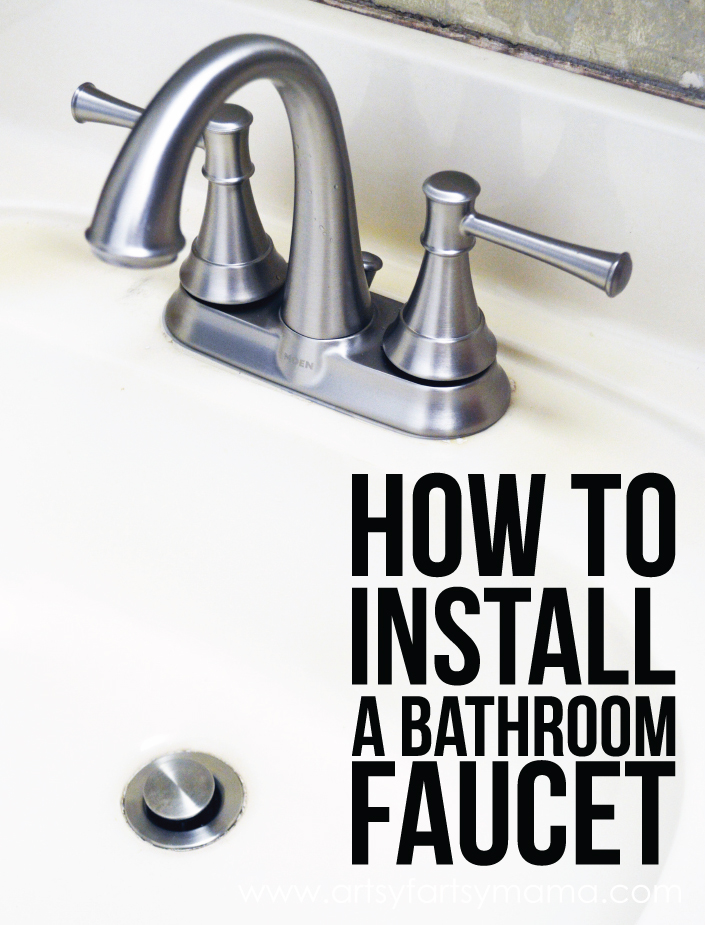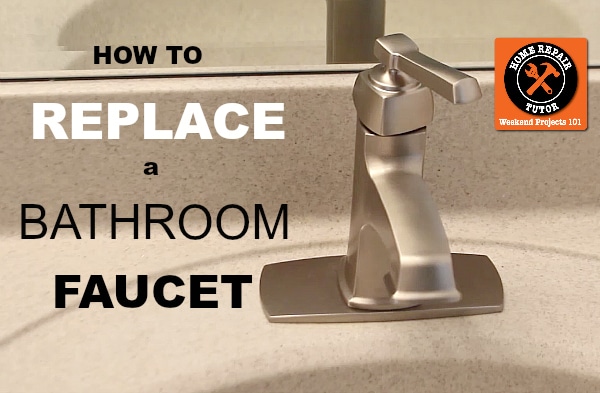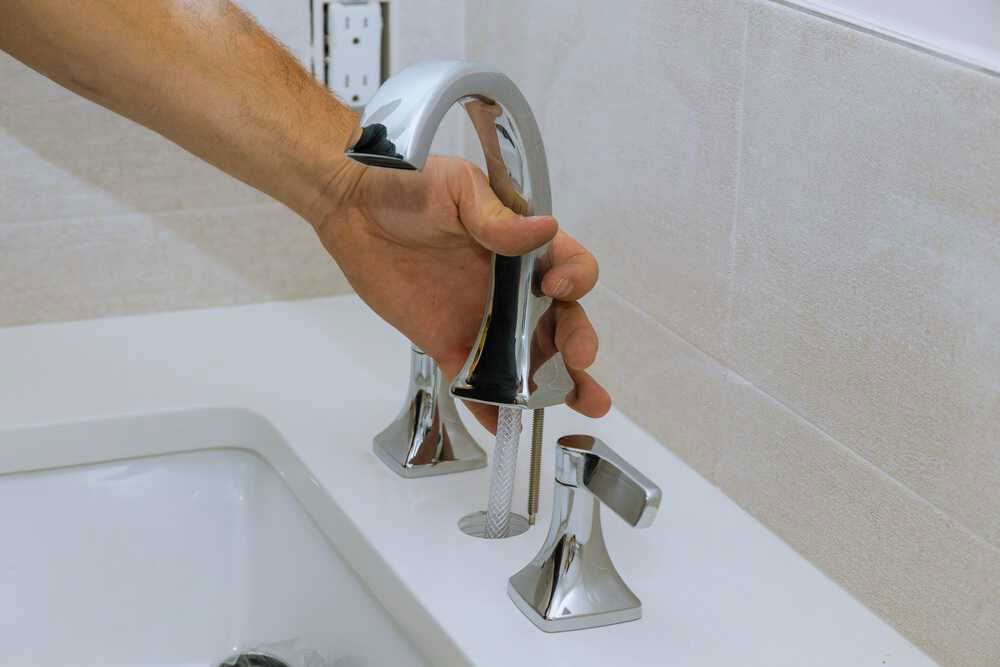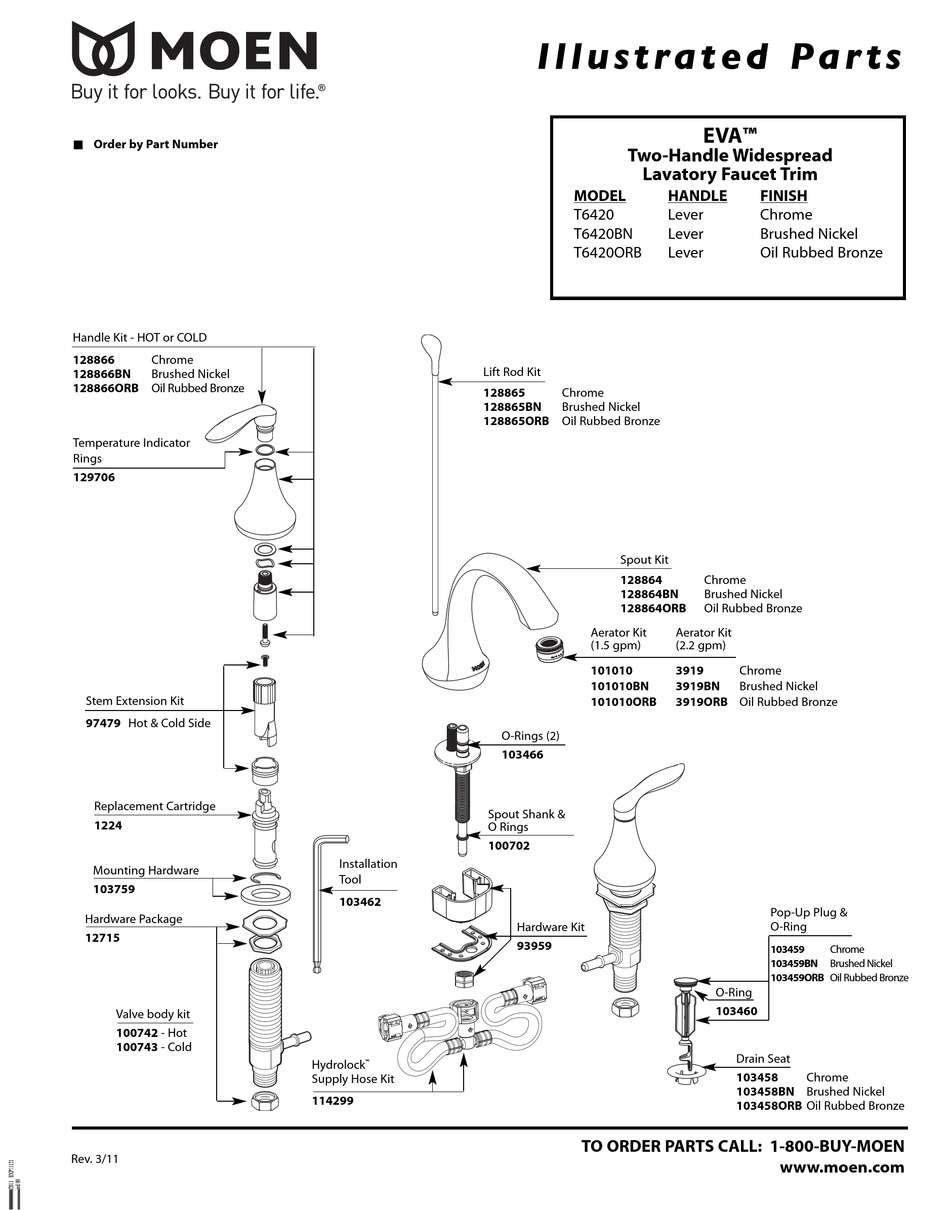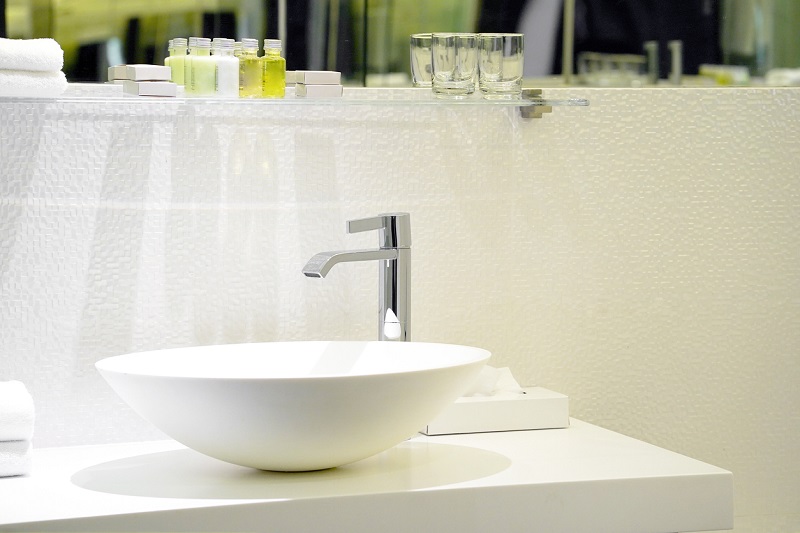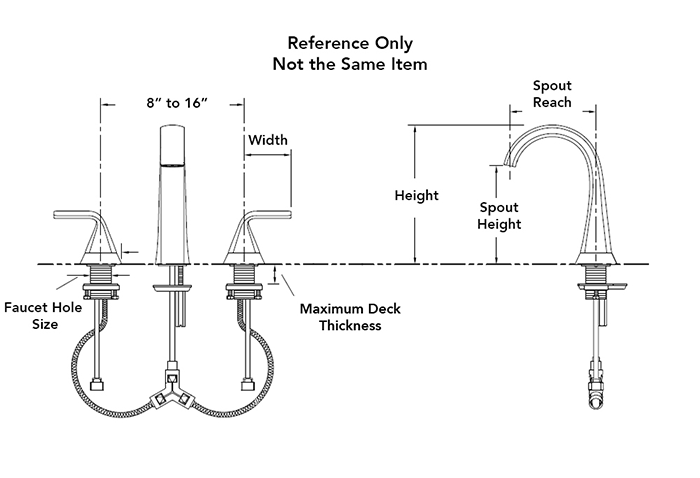Replacing a bathroom sink faucet may seem like a daunting task, but with the right tools and some basic knowledge, it can be a simple and rewarding DIY project. Not only will you save money by doing it yourself, but you'll also have the satisfaction of completing a home improvement project on your own. Follow these steps to learn how to replace a bathroom sink faucet.DIY Bathroom Sink Faucet Replacement
The first step in replacing a bathroom sink faucet is to gather all necessary tools and materials. You will need an adjustable wrench, a basin wrench, a screwdriver, plumber's tape, and the new faucet. Once you have everything ready, turn off the water supply to the sink. This can usually be done by turning off the shut-off valves under the sink.How to Replace a Bathroom Sink Faucet
Step 1: Remove the old faucet by loosening the nuts and disconnecting the water supply lines. Use the basin wrench to reach tight spaces. Step 2: Clean the area where the old faucet was installed. This will ensure a smooth and secure installation of the new faucet. Step 3: Install the new faucet by following the manufacturer's instructions. Use plumber's tape on any threaded connections to prevent leaks. Step 4: Reconnect the water supply lines and tighten the nuts. Step 5: Turn the water supply back on and test for any leaks. If there are any leaks, tighten the connections or add more plumber's tape.Step-by-Step Guide for Replacing a Bathroom Sink Faucet
When purchasing a new faucet, make sure to choose one that is the same size as your old one to avoid having to make any modifications to your sink or countertop. It's also a good idea to choose a faucet with a similar design to your old one, as this will make the installation process easier. Another tip is to have a bucket or towel handy to catch any water that may drip during the installation process. This will help keep your workspace clean and dry. If you're having trouble reaching tight spaces with a basin wrench, you can also use a pair of pliers with a cloth or rubber band wrapped around the jaws to prevent scratching the faucet.Replacing a Bathroom Sink Faucet: Tips and Tricks
Now that you have successfully replaced your bathroom sink faucet, you may be wondering if you can install your own faucets in other areas of your home. The answer is yes! The process is similar for all types of faucets, whether it's for a kitchen sink, bathtub, or shower. However, keep in mind that some more complex faucet installations, such as a wall-mounted faucet, may require professional assistance.DIY Bathroom Sink Faucet Installation
As mentioned earlier, the tools and materials you will need to replace a bathroom sink faucet include an adjustable wrench, basin wrench, screwdriver, plumber's tape, and the new faucet. You may also need a bucket or towel, as well as a cloth or rubber band if using pliers instead of a basin wrench.Tools and Materials Needed for Replacing a Bathroom Sink Faucet
The most common mistake people make when replacing a bathroom sink faucet is not turning off the water supply before beginning the installation process. This can lead to a big mess and even cause damage to your sink or countertop. Another mistake is not properly cleaning the area where the old faucet was installed. Any debris or residue left behind can interfere with the installation and cause leaks. Lastly, not following the manufacturer's instructions can also lead to issues during the installation process. Make sure to read and understand the instructions before beginning the installation.Common Mistakes to Avoid When Replacing a Bathroom Sink Faucet
If you're on a tight budget, there are still options for replacing your bathroom sink faucet without breaking the bank. One option is to purchase a basic, budget-friendly faucet. These may not have all the bells and whistles of a more expensive faucet, but they will still serve their purpose. Another option is to look for sales or discounts on faucets. You may be able to find a high-quality faucet at a discounted price, making it more affordable for your budget.Budget-Friendly Options for Replacing a Bathroom Sink Faucet
When choosing a bathroom sink faucet for your DIY project, there are a few things to consider. First, make sure the faucet fits the size and design of your sink. You should also consider the type of finish you want, such as chrome, brushed nickel, or oil-rubbed bronze. It's also important to choose a faucet that fits your budget and has good reviews. This will ensure you are getting a high-quality faucet that will last for years to come.How to Choose the Right Bathroom Sink Faucet for Your DIY Project
If you encounter any issues during the installation process, the first step is to carefully read the manufacturer's instructions. If the issue persists, you can check for common mistakes or try using different tools. If all else fails, it may be best to consult a professional plumber to ensure the faucet is installed correctly and to avoid any further problems. With these tips and a step-by-step guide, you can successfully replace a bathroom sink faucet on your own. Remember to take your time and follow the instructions carefully to ensure a smooth and successful installation. Happy DIY-ing!Troubleshooting Common Issues When Replacing a Bathroom Sink Faucet
Why You Should Consider Replacing Your Bathroom Sink Faucet

Outdated or Damaged Faucets Can Affect Your Bathroom's Aesthetic and Functionality
 Your bathroom sink faucet may seem like a small and insignificant part of your overall house design, but it plays a crucial role in both the aesthetic and functionality of your bathroom. Over time, faucets can become outdated or damaged due to wear and tear. A rusty or leaky faucet can make your bathroom look unappealing and can also lead to higher water bills. This is why it's important to consider replacing your bathroom sink faucet.
Your bathroom sink faucet may seem like a small and insignificant part of your overall house design, but it plays a crucial role in both the aesthetic and functionality of your bathroom. Over time, faucets can become outdated or damaged due to wear and tear. A rusty or leaky faucet can make your bathroom look unappealing and can also lead to higher water bills. This is why it's important to consider replacing your bathroom sink faucet.
DIY Replacement Saves You Time and Money
 Many homeowners may be hesitant to replace their bathroom sink faucet because they think it requires hiring a professional plumber and spending a lot of money. However, with the right tools and knowledge, replacing a faucet can be a simple and cost-effective DIY project. Not only will you save money on labor costs, but you will also have the satisfaction of completing a home improvement project on your own.
Many homeowners may be hesitant to replace their bathroom sink faucet because they think it requires hiring a professional plumber and spending a lot of money. However, with the right tools and knowledge, replacing a faucet can be a simple and cost-effective DIY project. Not only will you save money on labor costs, but you will also have the satisfaction of completing a home improvement project on your own.
Replacing Your Faucet Allows for Customization and Upgrades
 Another benefit of replacing your bathroom sink faucet is the opportunity to customize and upgrade your current fixture. You can choose from a variety of styles and finishes to match your bathroom's design and add a modern touch. Additionally, newer faucets often come with water-saving features that can help lower your water usage and save you money in the long run.
Another benefit of replacing your bathroom sink faucet is the opportunity to customize and upgrade your current fixture. You can choose from a variety of styles and finishes to match your bathroom's design and add a modern touch. Additionally, newer faucets often come with water-saving features that can help lower your water usage and save you money in the long run.
Steps to DIY Replace Your Bathroom Sink Faucet
 If you've decided to replace your bathroom sink faucet on your own, here are the basic steps to follow:
1. Turn off the water supply to your sink and disconnect the water lines from the old faucet.
2. Remove the old faucet by unscrewing the mounting nuts or bolts.
3. Clean the area where the old faucet was installed and make sure the new faucet will fit properly.
4. Install the new faucet according to the manufacturer's instructions.
5. Reconnect the water supply lines and turn the water back on.
6. Test the new faucet for any leaks or malfunctions.
If you've decided to replace your bathroom sink faucet on your own, here are the basic steps to follow:
1. Turn off the water supply to your sink and disconnect the water lines from the old faucet.
2. Remove the old faucet by unscrewing the mounting nuts or bolts.
3. Clean the area where the old faucet was installed and make sure the new faucet will fit properly.
4. Install the new faucet according to the manufacturer's instructions.
5. Reconnect the water supply lines and turn the water back on.
6. Test the new faucet for any leaks or malfunctions.
Conclusion
 Replacing your bathroom sink faucet may seem like a daunting task, but with the right tools and knowledge, it can be a simple and rewarding DIY project. Not only will it enhance the overall look and functionality of your bathroom, but it can also save you time and money in the long run. So why not take the plunge and give your bathroom sink a fresh new look?
Replacing your bathroom sink faucet may seem like a daunting task, but with the right tools and knowledge, it can be a simple and rewarding DIY project. Not only will it enhance the overall look and functionality of your bathroom, but it can also save you time and money in the long run. So why not take the plunge and give your bathroom sink a fresh new look?





